Serving 551 students in grades Prekindergarten-5, Cumberland Mills Elementary School ranks in the bottom 50% of all schools in North Carolina for overall test scores (math proficiency is bottom 50%, and reading proficiency is bottom 50%).
The percentage of students achieving proficiency in math is 44% (which is lower than the North Carolina state average of 51%). The percentage of students achieving proficiency in reading/language arts is 41% (which is lower than the North Carolina state average of 50%).
The student:teacher ratio of 16:1 is higher than the North Carolina state level of 15:1.
Minority enrollment is 84% of the student body (majority Black), which is higher than the North Carolina state average of 57% (majority Black).
Quick Stats (2025)
- Grades: Prekindergarten-5
- Enrollment: 551 students
- Student:Teacher Ratio: 16:1
- Minority Enrollment: 84%
- Overall Testing Rank: Bottom 50% in NC
- Math Proficiency: 44% (Btm 50%)
- Reading Proficiency: 41% (Btm 50%)
- Science Proficiency: 65-69% (Top 50%)
- Source: National Center for Education Statistics (NCES), NC Dept. of Education
Top Rankings
Cumberland Mills Elementary School ranks among the top 20% of public schools in North Carolina for:
Category
Attribute
Most improved public schools
Percent Eligible For Free Lunch
School Overview
Cumberland Mills Elementary School's student population of 551 students has declined by 12% over five school years.
The teacher population of 34 teachers has declined by 17% over five school years.
Grades Offered
Grades Prekindergarten-5
(offers virtual instruction)
(offers virtual instruction)
Total Students
551 students
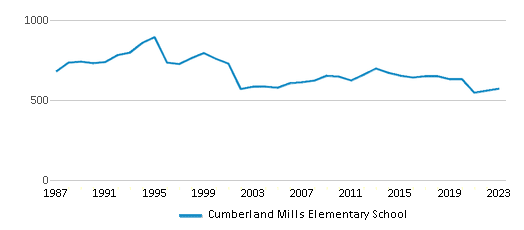
Gender %
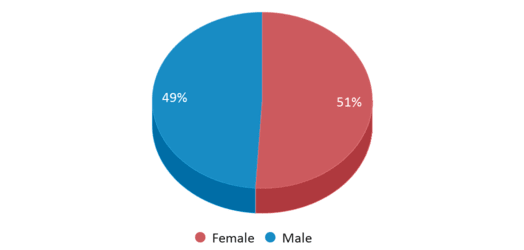
Total Classroom Teachers
34 teachers
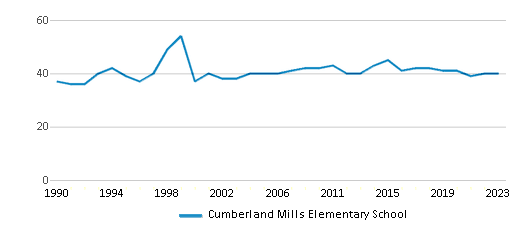
Students by Grade
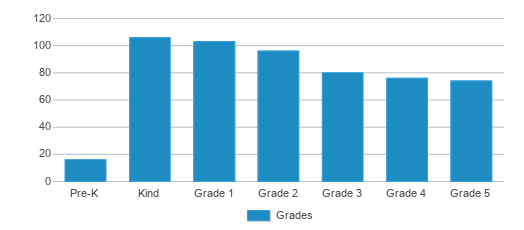
School Rankings
Cumberland Mills Elementary School ranks within the bottom 50% of all 2,617 schools in North Carolina (based off of combined math and reading proficiency testing data).
The diversity score of Cumberland Mills Elementary School is 0.67, which is less than the diversity score at state average of 0.71. The school's diversity has stayed relatively flat over five school years.
Overall Testing Rank
#1708 out of 2617 schools
(Bottom 50%)
(Bottom 50%)
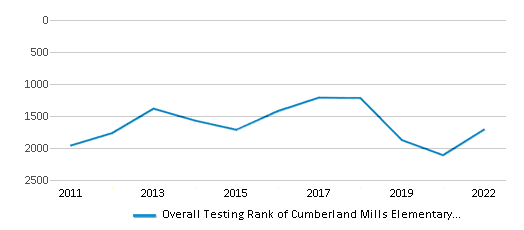
Math Test Scores (% Proficient)
44%
51%
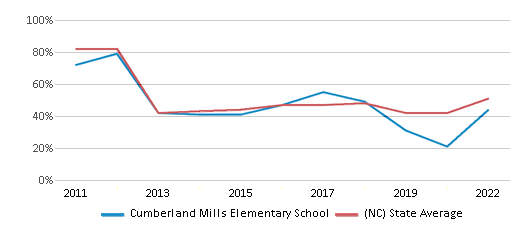
Reading/Language Arts Test Scores (% Proficient)
41%
50%
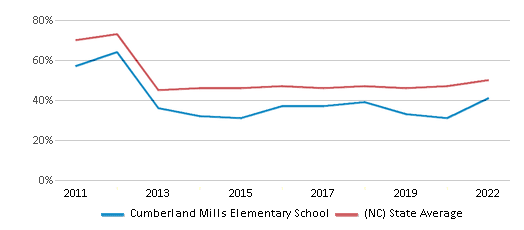
Science Test Scores (% Proficient)
65-69%
63%
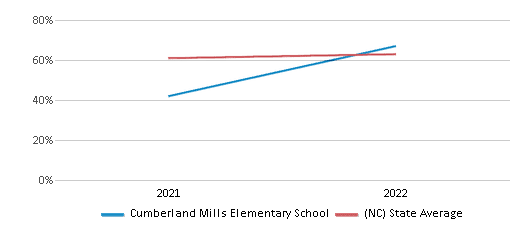
Student : Teacher Ratio
16:1
15:1
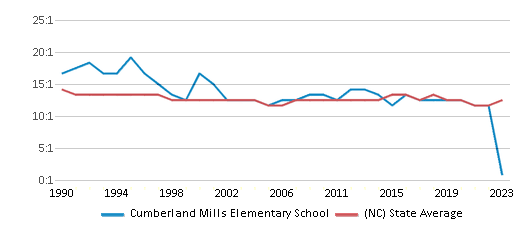
American Indian
2%
1%
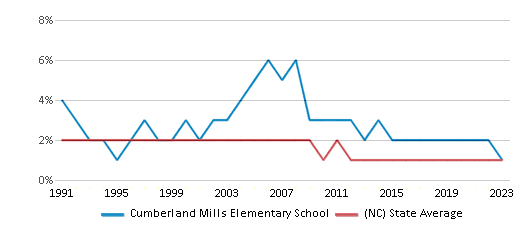
Asian
1%
4%
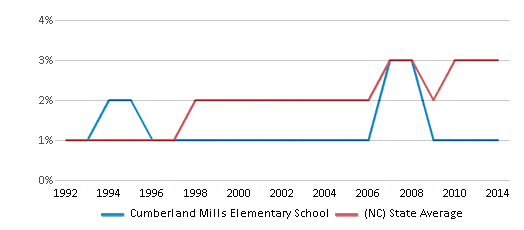
Hispanic
19%
21%
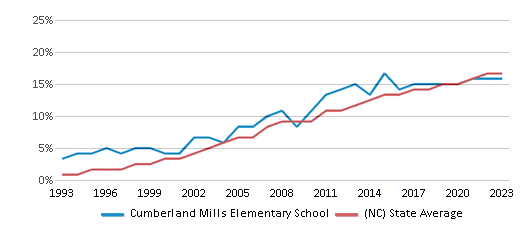
Black
51%
25%
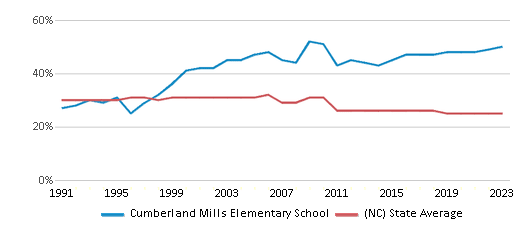
White
16%
43%
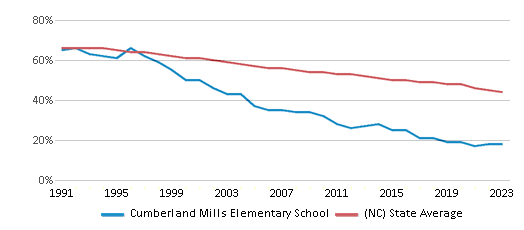
Hawaiian
1%
n/a
Two or more races
10%
6%
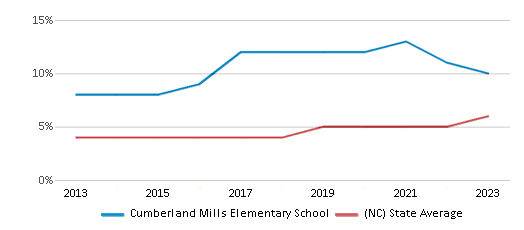
All Ethnic Groups
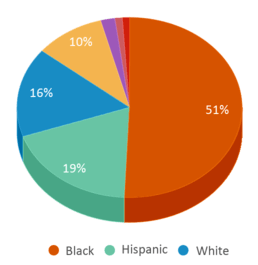
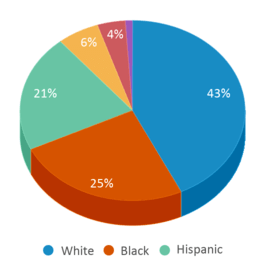
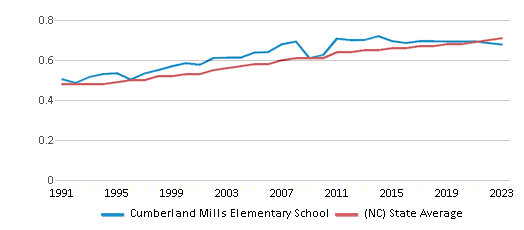
Participates in the National School Lunch Program (NSLP)
Yes
Eligible for Free Lunch
99%
68%
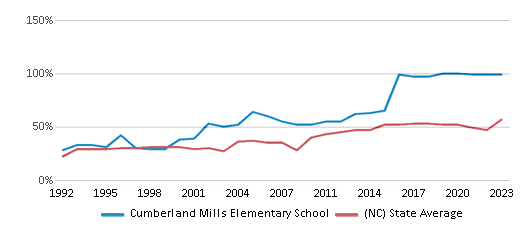
Eligible for Reduced Lunch (14-15)
10%
5%
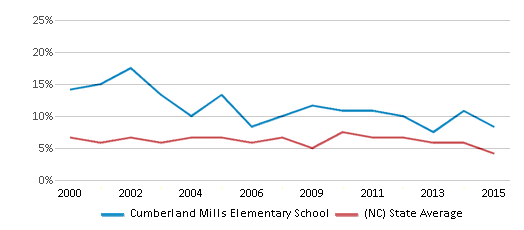
School Statewide Testing
School District Name
Source: National Center for Education Statistics (NCES), NC Dept. of Education
Profile last updated: 02/09/2025
Frequently Asked Questions
What is Cumberland Mills Elementary School's ranking?
Cumberland Mills Elementary School is ranked #1708 out of 2,617 schools, which ranks it among the bottom 50% of public schools in North Carolina.
What schools are Cumberland Mills Elementary School often compared to?
Cumberland Mills Elementary Schoolis often viewed alongside schools like Lake Rim Elementary School by visitors of our site.
What percent of students have achieved state testing proficiency in math and reading?
44% of students have achieved math proficiency (compared to the 51% NC state average), while 41% of students have achieved reading proficiency (compared to the 50% NC state average).
How many students attend Cumberland Mills Elementary School?
551 students attend Cumberland Mills Elementary School.
What is the racial composition of the student body?
51% of Cumberland Mills Elementary School students are Black, 19% of students are Hispanic, 16% of students are White, 10% of students are Two or more races, 2% of students are American Indian, 1% of students are Asian, and 1% of students are Hawaiian.
What is the student:teacher ratio of Cumberland Mills Elementary School?
Cumberland Mills Elementary School has a student ration of 16:1, which is higher than the North Carolina state average of 15:1.
What grades does Cumberland Mills Elementary School offer ?
Cumberland Mills Elementary School offers enrollment in grades Prekindergarten-5 (offers virtual instruction).
What school district is Cumberland Mills Elementary School part of?
Cumberland Mills Elementary School is part of Cumberland County Schools School District.
In what neighborhood is Cumberland Mills Elementary School located?
Cumberland Mills Elementary School is located in the Douglas Byrd neighborhood of Fayetteville, NC. There are 14 other public schools located in Douglas Byrd.
School Reviews
2 5/16/2011
I feel like the school as a whole is good, but some of the teachers there are just that.... THERE!, and nothing more. My sons teacher this year was a buz kill. If he went down a grade she always made a negative comment, but when my son made a 100 average in a subject she never said a word of encouragement.Never ever ever not on one report card. She wasn't in my opinion a teacher that motivated her students, well I should say a select few she motivated because the other kids came home and talked about it. If you are going to play favorites at least be smart enough to hide it. Shame on you Ms. J. 4th grade teacher.
2 11/9/2009
Discipline poor and homework excessive.
Review Cumberland Mills Elementary School. Reviews should be a few sentences in length. Please include any comments on:
- Quality of academic programs, teachers, and facilities
- Availability of music, art, sports and other extracurricular activities
Recent Articles

What Is A Charter School?
Explore the world of charter schools in this comprehensive guide. Learn about their history, how they operate, and the pros and cons of this educational innovation. Discover key facts about charter schools, including admission policies, demographics, and funding, as well as what to look for when considering a charter school for your child.

10 Reasons Why High School Sports Benefit Students
Discover the 10 compelling reasons why high school sports are beneficial for students. This comprehensive article explores how athletics enhance academic performance, foster personal growth, and develop crucial life skills. From improved fitness and time management to leadership development and community representation, learn why participating in high school sports can be a game-changer for students' overall success and well-being.

February 05, 2025
Understanding the U.S. Department of Education: Structure, Impact, and EvolutionWe explore how the Department of Education shapes American education, from its cabinet-level leadership to its impact on millions of students, written for general audiences seeking clarity on this vital institution.








